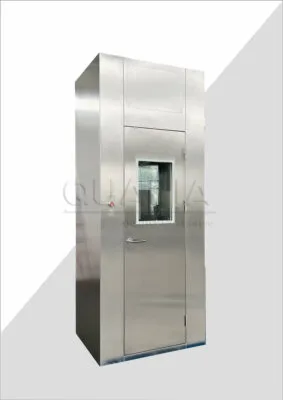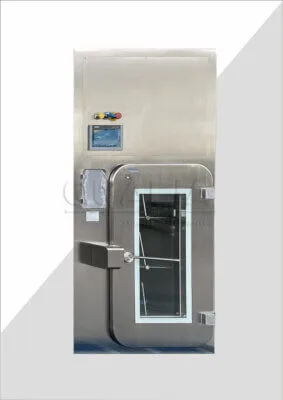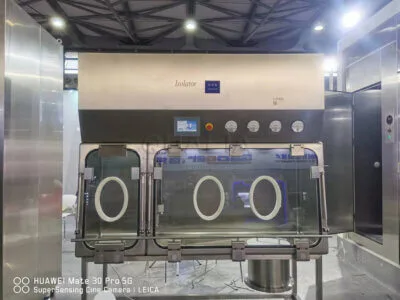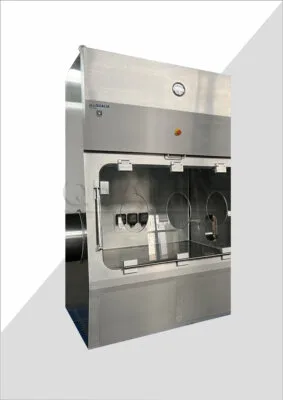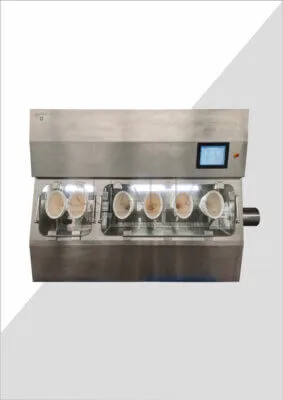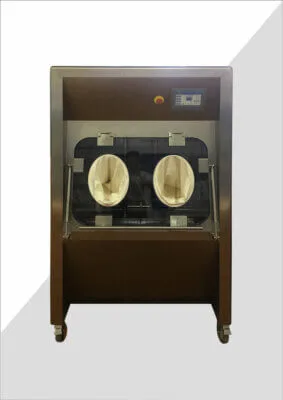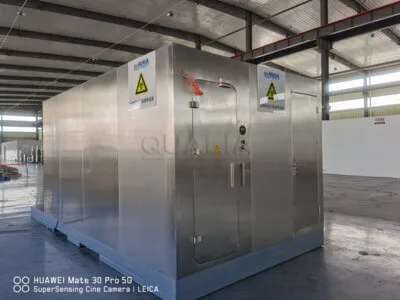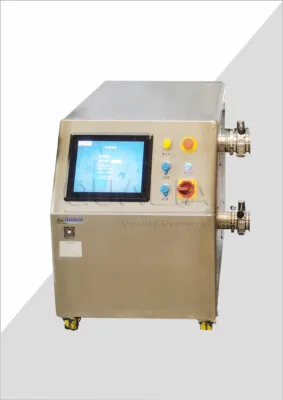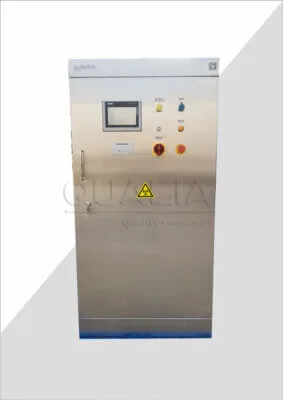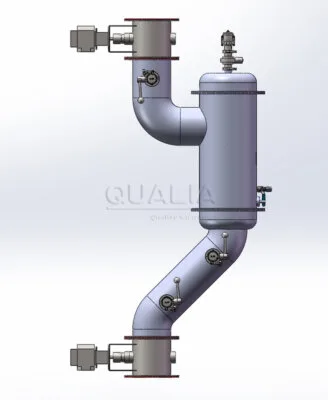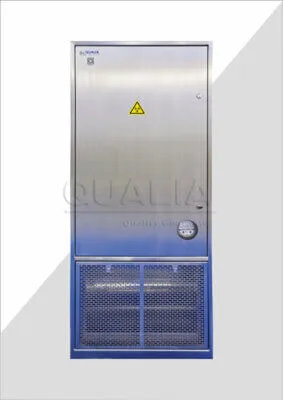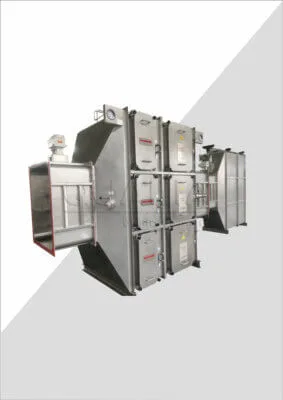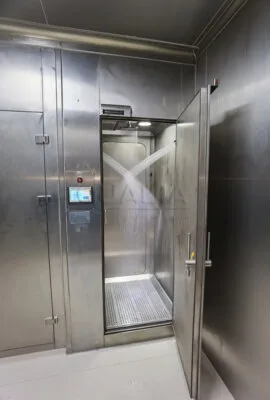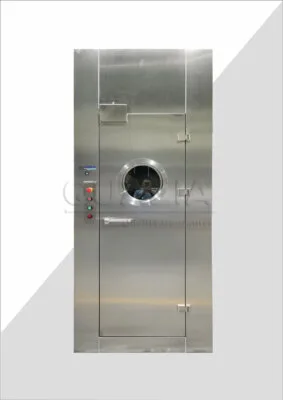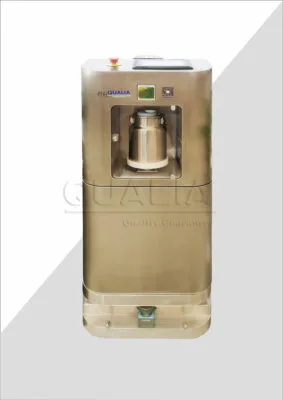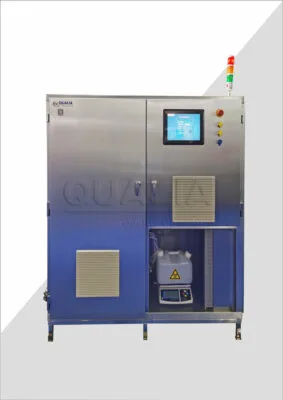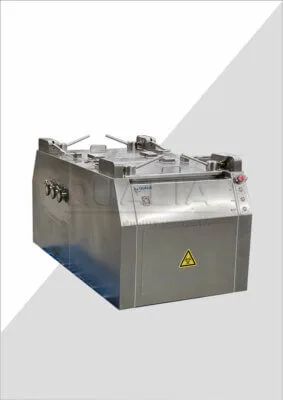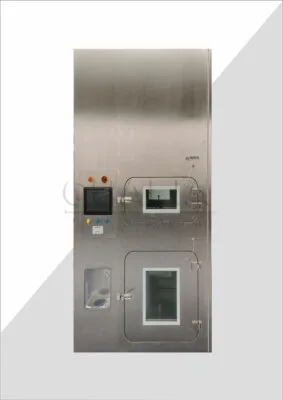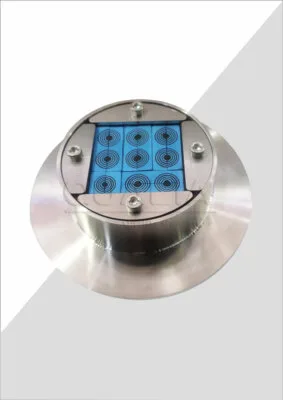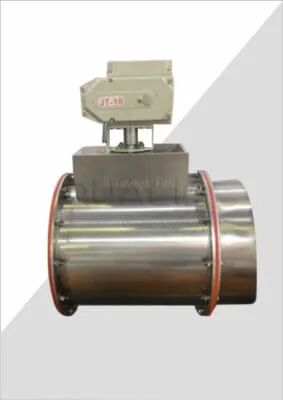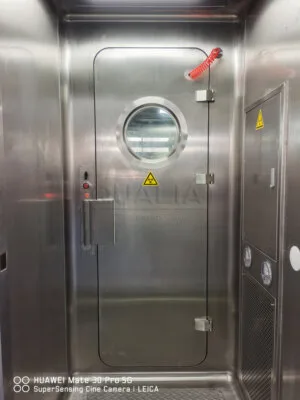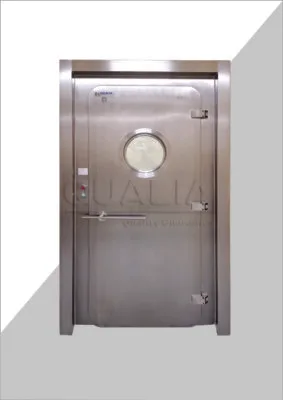Biosafety isolators play a crucial role in maintaining sterile environments for sensitive research and manufacturing processes. At the heart of these systems are gloves and gaskets, which form critical barriers against contamination. Proper care and maintenance of these components are essential to ensure the integrity and effectiveness of biosafety isolators.
In this comprehensive guide, we'll explore the intricacies of glove and gasket care in biosafety isolators. From routine inspections to advanced maintenance techniques, we'll cover everything you need to know to keep your isolator functioning at peak performance. Whether you're a seasoned professional or new to the field, this article will provide valuable insights into maintaining the safety and efficiency of your biosafety equipment.
As we delve into this topic, we'll examine the importance of regular inspections, common issues that arise with gloves and gaskets, and best practices for addressing these challenges. We'll also discuss the latest technologies and methodologies in glove and gasket inspection, ensuring you stay up-to-date with industry standards.
The safe and effective operation of biosafety isolators hinges on the proper care of their gloves and gaskets. These components serve as the primary interface between the controlled environment inside the isolator and the external world. Their integrity is paramount to maintaining sterility and preventing contamination.
"Regular inspection and maintenance of gloves and gaskets are not just recommended practices; they are essential safeguards that protect the integrity of research, the quality of products, and the safety of personnel working with biosafety isolators."
With this understanding, let's explore the key aspects of glove and gasket care in biosafety isolators, starting with the fundamental question: Why is regular inspection so critical?
Why is regular glove and gasket inspection crucial for biosafety isolators?
Regular inspection of gloves and gaskets in biosafety isolators is not just a routine task; it's a critical process that ensures the safety and integrity of the controlled environment. These components are the frontline defense against contamination and breaches in sterility.
Gloves and gaskets are subject to wear and tear from regular use, exposure to chemicals, and environmental factors. Over time, this can lead to degradation, compromising their ability to maintain a secure seal. Regular inspections help identify potential issues before they escalate into serious problems that could jeopardize experiments or production processes.
"Consistent and thorough inspections of gloves and gaskets can detect microscopic tears, pinhole leaks, or deterioration that might otherwise go unnoticed, preventing costly contaminations and ensuring compliance with stringent safety standards."
To illustrate the importance of regular inspections, consider the following data:
| Inspection Frequency | Risk of Undetected Breaches | Contamination Incidents (per year) |
|---|---|---|
| Daily | Low | 0-1 |
| Weekly | Moderate | 2-3 |
| Monthly | High | 5-7 |
| Quarterly | Very High | 10+ |
As the table shows, more frequent inspections correlate with a lower risk of contamination incidents. This underscores the critical nature of regular glove and gasket inspections in maintaining the integrity of biosafety isolators.
What are the key components of a comprehensive glove inspection program?
A comprehensive glove inspection program is the cornerstone of maintaining biosafety isolator integrity. It involves a systematic approach to examining gloves for any signs of wear, damage, or potential failure points.
The program should include visual inspections, physical tests, and documentation of findings. Visual inspections can identify obvious tears, discoloration, or areas of thinning. Physical tests, such as pressure tests or leak detection methods, can reveal less visible issues like pinholes or weakened areas.
"An effective glove inspection program combines visual scrutiny, tactile examination, and scientific testing to create a multi-layered approach to safety. This comprehensive strategy significantly reduces the risk of glove failures and subsequent contamination events."
A well-structured glove inspection program typically includes the following components:
| Inspection Component | Frequency | Purpose |
|---|---|---|
| Visual Check | Daily | Identify visible damage or wear |
| Pressure Test | Weekly | Detect small leaks or weak spots |
| Thickness Measurement | Monthly | Monitor degradation over time |
| Chemical Resistance Test | Quarterly | Ensure ongoing material integrity |
Implementing such a program requires dedication and resources, but the benefits far outweigh the costs when considering the potential risks of glove failure in a biosafety environment.
QUALIA offers advanced solutions for glove and gasket inspection, ensuring that your biosafety isolators maintain their integrity and effectiveness. Their expertise can be invaluable in setting up and maintaining a robust inspection program.
How do environmental factors affect gasket performance in biosafety isolators?
Environmental factors play a significant role in the performance and longevity of gaskets in biosafety isolators. Temperature fluctuations, humidity levels, and exposure to various chemicals can all impact gasket integrity over time.
Gaskets are typically made from materials like silicone or other elastomers, which can react differently to environmental stressors. For instance, extreme temperatures can cause gaskets to harden or become brittle, while high humidity might lead to swelling or degradation of certain materials.
"Understanding the specific environmental conditions within your biosafety isolator is crucial for selecting the right gasket materials and implementing appropriate maintenance schedules. This knowledge can significantly extend gasket life and enhance overall system performance."
The following table illustrates how different environmental factors can affect gasket performance:
| Environmental Factor | Potential Impact on Gaskets | Recommended Mitigation |
|---|---|---|
| High Temperature | Hardening, cracking | Heat-resistant materials, regular replacement |
| High Humidity | Swelling, degradation | Moisture-resistant materials, dehumidification |
| Chemical Exposure | Material breakdown | Chemical-specific resistant materials, frequent inspections |
| UV Light | Deterioration, discoloration | UV-resistant materials, shielding |
By considering these factors and implementing appropriate measures, you can ensure that your gaskets maintain their sealing properties and contribute to the overall effectiveness of your biosafety isolator.
What are the latest technologies in glove and gasket inspection for biosafety isolators?
The field of glove and gasket inspection for biosafety isolators is continuously evolving, with new technologies emerging to enhance accuracy, efficiency, and reliability. These advancements are crucial in meeting the ever-increasing demands for safety and quality in controlled environments.
One of the most significant developments is the use of automated optical inspection (AOI) systems. These systems use high-resolution cameras and advanced image processing algorithms to detect defects that might be invisible to the naked eye. AOI can quickly scan large areas of gloves and gaskets, identifying even minute imperfections with a high degree of accuracy.
"Automated inspection technologies are revolutionizing the way we approach glove and gasket maintenance in biosafety isolators. These systems not only improve detection rates but also provide consistent, objective results that can be tracked over time for trend analysis and predictive maintenance."
Another emerging technology is the use of ultrasonic testing for gasket inspection. This non-destructive testing method can detect internal flaws and inconsistencies in gasket materials without compromising their integrity.
| Technology | Application | Benefits |
|---|---|---|
| Automated Optical Inspection | Glove surface scanning | High-speed, high-accuracy defect detection |
| Ultrasonic Testing | Gasket internal inspection | Non-destructive, capable of detecting hidden flaws |
| Thermal Imaging | Heat distribution analysis | Identifies weak spots and potential failure points |
| AI-powered Analysis | Data interpretation | Predictive maintenance, trend analysis |
The Glove and gasket inspection systems offered by QUALIA incorporate some of these cutting-edge technologies, providing a comprehensive solution for maintaining the integrity of biosafety isolators.
How can proper glove and gasket care extend the life of biosafety isolators?
Proper care and maintenance of gloves and gaskets can significantly extend the operational life of biosafety isolators. These components are often the first to show signs of wear and tear, and their condition can be indicative of the overall health of the isolator system.
Regular cleaning, careful handling, and prompt replacement of worn parts are key to maintaining the integrity of gloves and gaskets. This proactive approach not only ensures the continuous safe operation of the isolator but also prevents small issues from escalating into major problems that could require costly repairs or system downtime.
"Investing time and resources in glove and gasket care is an investment in the longevity and reliability of your biosafety isolator. A well-maintained system not only performs better but also provides a higher return on investment over its operational lifetime."
Consider the following data on the impact of proper maintenance on isolator lifespan:
| Maintenance Level | Average Isolator Lifespan | Frequency of Major Repairs |
|---|---|---|
| Minimal | 5-7 years | Every 1-2 years |
| Standard | 8-10 years | Every 3-4 years |
| Comprehensive | 12-15 years | Every 5-6 years |
As the table illustrates, comprehensive maintenance, which includes diligent glove and gasket care, can significantly extend the useful life of a biosafety isolator while reducing the frequency of major repairs.
What are the best practices for training personnel in glove and gasket inspection?
Effective training of personnel in glove and gasket inspection is crucial for maintaining the integrity of biosafety isolators. A well-trained team can identify potential issues early, perform routine maintenance correctly, and ensure consistent adherence to safety protocols.
Training programs should cover theoretical knowledge about the importance of gloves and gaskets in biosafety systems, as well as hands-on practice in inspection techniques. This combination ensures that staff not only understand why inspections are important but also how to perform them effectively.
"A comprehensive training program in glove and gasket inspection is an investment in safety, efficiency, and quality. Well-trained personnel are the frontline defense against contamination and system failures in biosafety isolators."
Key components of an effective training program include:
| Training Component | Description | Frequency |
|---|---|---|
| Theoretical Overview | Understanding of isolator systems and component functions | Initial training |
| Inspection Techniques | Hands-on practice with various inspection methods | Initial training and annual refresher |
| Documentation Procedures | Proper recording and reporting of inspection results | Quarterly review |
| Emergency Response | Protocols for handling breaches or failures | Bi-annual drills |
| New Technology Integration | Training on newly implemented inspection technologies | As needed |
By implementing a robust training program, organizations can ensure that their personnel are well-equipped to maintain the highest standards of safety and efficiency in biosafety isolator operations.
How do regulatory standards impact glove and gasket maintenance in biosafety isolators?
Regulatory standards play a crucial role in shaping the maintenance practices for gloves and gaskets in biosafety isolators. These standards, set by organizations such as ISO, ASTM, and various governmental bodies, provide guidelines for proper maintenance, inspection frequencies, and acceptable performance criteria.
Adherence to these standards is not just a matter of compliance; it's essential for ensuring the safety of personnel, the integrity of research, and the quality of products produced within these controlled environments. Regulatory standards often dictate the minimum requirements for inspection intervals, documentation practices, and performance testing.
"Regulatory compliance in glove and gasket maintenance is not just about meeting legal requirements; it's about embracing a culture of safety and quality that protects both personnel and products. Staying ahead of regulatory standards often leads to improved operational efficiency and reduced risk of contamination incidents."
The impact of regulatory standards on maintenance practices can be seen in the following table:
| Regulatory Body | Standard | Impact on Maintenance |
|---|---|---|
| ISO | ISO 14644 | Defines cleanliness classes and testing methods |
| ASTM | ASTM F1670/F1671 | Sets criteria for barrier effectiveness against blood-borne pathogens |
| FDA | 21 CFR Part 11 | Governs electronic records and signatures in maintenance documentation |
| EPA | Good Laboratory Practice | Establishes quality standards for non-clinical laboratory studies |
Understanding and implementing these standards is crucial for any organization working with biosafety isolators. QUALIA's expertise in this area can be invaluable in ensuring that your maintenance practices not only meet but exceed regulatory requirements.
Conclusion
Glove and gasket care in biosafety isolators is a critical aspect of maintaining safe and effective controlled environments. From regular inspections to advanced maintenance techniques, every step in the care process contributes to the overall integrity and longevity of these essential systems.
We've explored the importance of regular inspections, the impact of environmental factors on gasket performance, and the latest technologies in glove and gasket inspection. We've also discussed best practices for personnel training and the influence of regulatory standards on maintenance procedures.
By implementing comprehensive care programs, leveraging advanced inspection technologies, and staying abreast of regulatory requirements, organizations can ensure the optimal performance of their biosafety isolators. This not only protects the safety of personnel and the integrity of research but also contributes to the overall efficiency and cost-effectiveness of operations.
Remember, the care of gloves and gaskets is not just a maintenance task; it's a critical component of your overall biosafety strategy. By prioritizing this aspect of isolator care, you're investing in the safety, reliability, and longevity of your biosafety systems.
As the field continues to evolve, staying informed about the latest developments in glove and gasket care will be crucial. Whether you're updating your maintenance protocols or implementing new inspection technologies, partnering with experts like QUALIA can provide the knowledge and tools you need to keep your biosafety isolators operating at peak performance.
External Resources
Glovebox Safety – This resource provides detailed guidelines on the safety and inspection of gloveboxes, including visual inspections, gauge checks, soap tests, and smoke tests to ensure the integrity and leak-tightness of the gloves and the glovebox system.
Glove AOI Inspection System – This link describes an advanced Automated Optical Inspection (AOI) system designed for inspecting gloves during the manufacturing process. It covers various stages of inspection, including fingertip, body, and wrist inspections, to detect defects and ensure high-quality glove production.
Glove Leak Testing – This blog post offers a practical guide on leak testing gloves and glove sleeves using devices like the GLTA (Glove Leak Test Apparatus) and WGT (Water Glove Test). It details methods to identify and locate leaks in gloves, ensuring their integrity.
How Manufacturers Test Glove Quality – This article explains the rigorous testing processes manufacturers use to ensure glove quality, including pinhole leak tests and acceptable quality limits (AQL) set by the U.S. Food and Drug Administration and the American Society for Testing and Materials (ASTM).
Gasket and Seal Inspection – Although not exclusively focused on gloves, this resource from engineering and inspection services often includes gasket inspection methods, which can be relevant when considering the sealing integrity of glove systems.
ISO Standards for Glove Testing – This resource, while not directly linked here, would typically involve ISO standards and guidelines for testing gloves, including those related to barrier integrity and chemical resistance. Manufacturers often refer to these standards to ensure compliance.
ASTM Standards for Glove Testing – The American Society for Testing and Materials (ASTM) provides various standards for testing gloves, including those for medical and industrial applications. These standards cover aspects such as barrier integrity, tensile strength, and chemical resistance.
Industrial Hygiene and Safety Resources – Websites like the Occupational Safety and Health Administration (OSHA) or the National Institute for Occupational Safety and Health (NIOSH) often provide guidelines and resources on the proper use, inspection, and maintenance of gloves in various industrial settings. These resources ensure that gloves meet safety standards and are used correctly to prevent workplace hazards.
Related Contents:
- OEB4/OEB5 Isolator Glove Integrity: Testing Methods
- OEB4/OEB5 Isolator Glove Change: Step-by-Step Procedures
- Glove Systems for Biosafety Isolators
- Biosafety Isolators in Pharmaceutical Production
- Glove Box Isolators: Enhancing Lab Safety
- Sterility Testing: Biosafety Isolator Protocols
- Biosafety Isolators for Infectious Disease Studies
- OEB4/OEB5 Glove Box Isolators: Handling Potent Compounds
- OEB4/OEB5 Isolator Maintenance: Preventive Schedules




